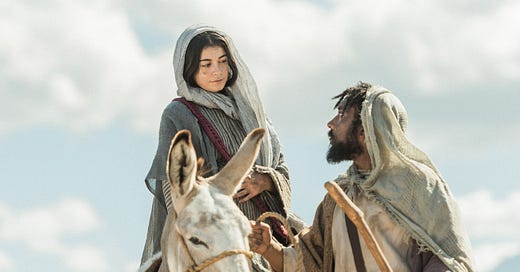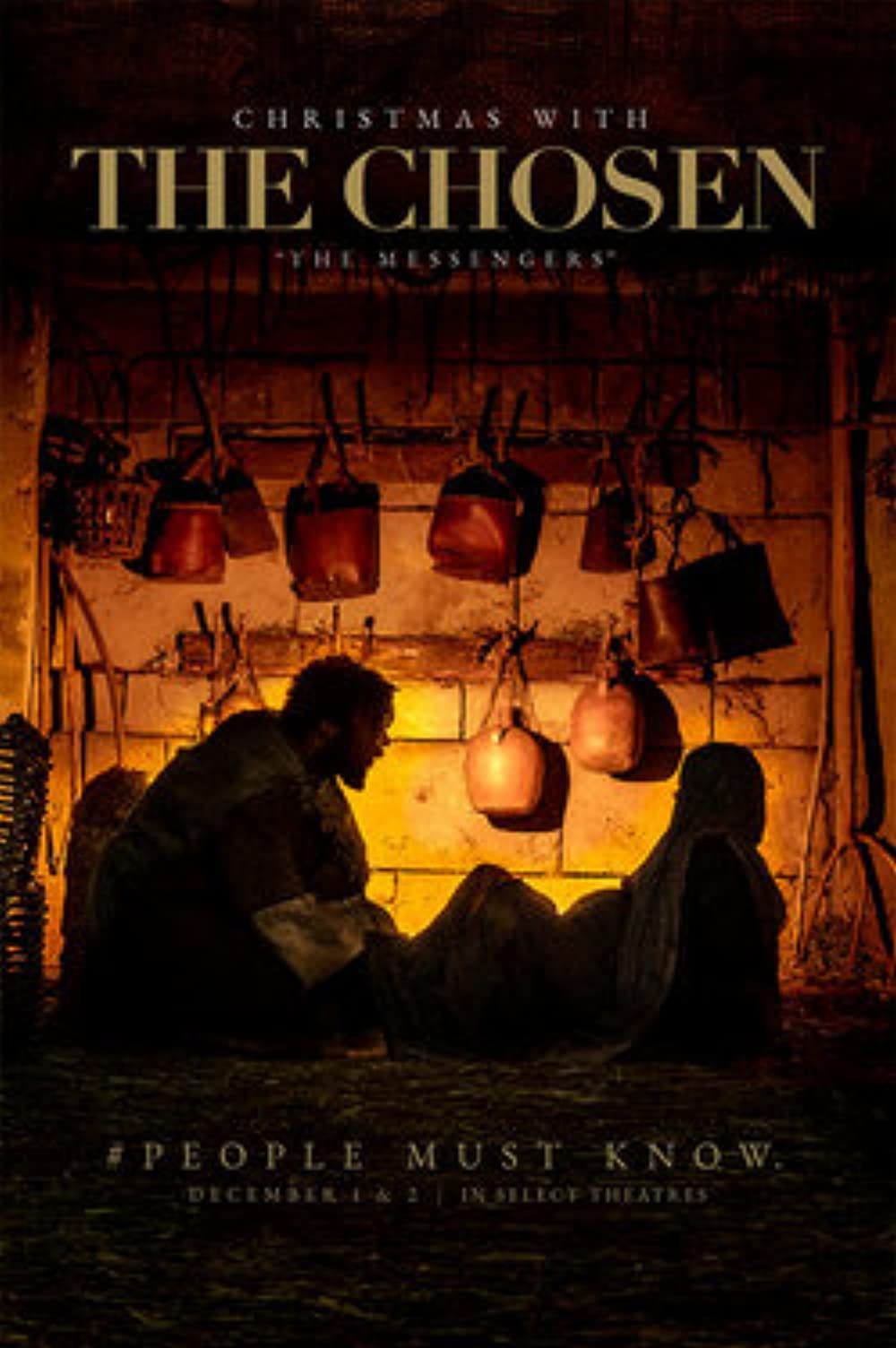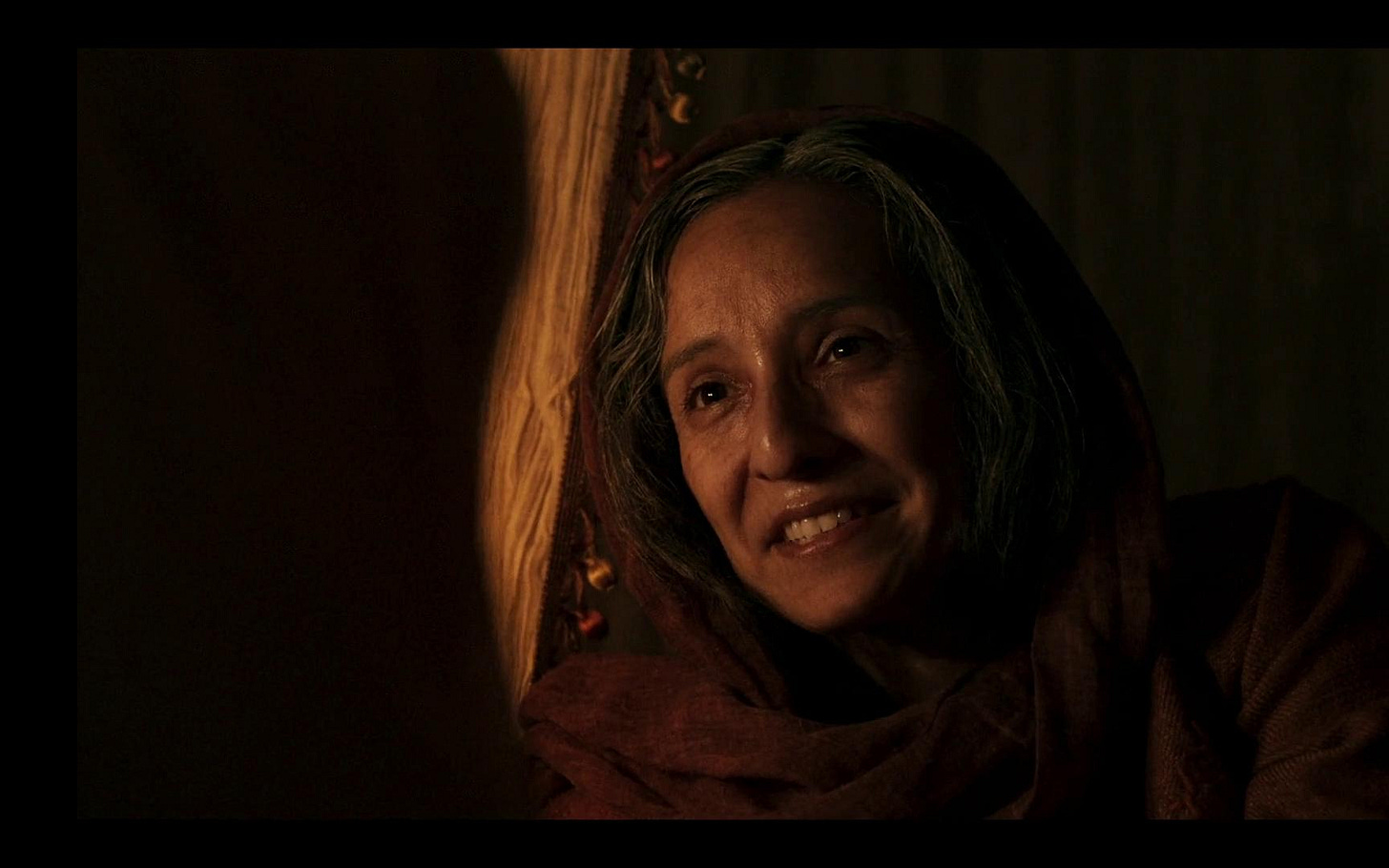Summary
The Messengers tells the very familiar story of the first Christmas, the birth of Christ. Between the scenes of the Nativity that we know by heart, we jump ahead to after the crucifixion and ascension of our Lord to A.D. 48. The followers of Jesus are suffering persecution. Big James and Nathaniel have already been martyred. Mary Magdalene travels in secret with the help of Simon the former Zealot to visit Mary the mother of Jesus who is ill and staying with Lazarus. Our Mother gives Mary Magdalene a message to take to the gospel author Luke in Rome, a piece of her story that she left out when first giving her account of the birth of Jesus as well as a very special gift.
Megan’s Insight
Mary’s Magnificat, also known as The Canticle of Mary, Song of Mary, or the Ode of the Theotokos is found only in the Gospel of Luke. This beautiful song of praise was Mary’s response to her cousin Elizabeth’s greeting and praise during the visitation. Mary’s words are sung or recited during Vespers, or evening prayers.
Mary’s words are both personal and universal. She is filled with wonder and awe as she reflects on God choosing her, a humble servant, for the important job of carrying His son. Her words are universal as she thanks God for His faithfulness and fulfilled promises to His people. Mary speaks in the past tense with an understanding of eternity. She knows with certainty that she is carrying the Savior of the world and that in this incarnation, God has already perfected the salvation of His creation.
Mitchell’s Insight
“I am responsible for you Mary, for you and the. . .(points toward the baby Jesus in Mary’s belly).” This is a very early line from Joseph in the opening of the episode. This fourth Sunday of Advent, we get the reading in which Joseph is visited by an angel in his dream and take Our Holy Mother into his home and watches over her and the child. It is such a short part of the gospel that we can easily breeze right by it without a great deal of consideration.
What did this mean for Joseph? We are not told how old St. Joseph was at the time of Jesus’s birth. We don’t know if he was a young man with other marriage opportunities or if was an elderly widower who didn’t need to put up with the “headache” of Mary’s controversial pregnancy. As Mary says in the opening scene, Joseph had to say yes. Joseph’s position was not simple. Yet, scripture tells us Joseph was a righteous man, and the episode depicts him as a man who loves his newly betrothed wife and soon-to-be adopted son. He immediately demonstrates what true love is. He wills the good of the other person. He sacrifices his needs and comfort to try to help provide for Mary and Jesus. St. Joseph pray for us!
Michael’s Insight
There are two important symbols and traditions that are introduced in this episode. The first is the Ichthys (The Jesus Fish), and the other is the tradition of relics.
When Tychicus arrives at Mary’s hiding place, he draws an arch on the ground with his foot. Lazarus comes out to the gate to meet him and finishes the symbol of the fish with his own arch. Tradition holds that this was a secret greeting that early Christians would use to identify themselves as believers and friends of the faith. This makes the Ichthys one of the most important Christian symbols as it played a pivotal part in allowing the early church to meet and grow in times of extreme persecution.
At the end of the episode, we see that Mary has kept the swaddling cloth that she wrapped Jesus in at His birth. This is something that most people, even secular people do all the time. Whether it is a grandpa’s pocket knife, a dad’s watch, or a grandma’s quilt; people hold on to items because it makes them feel close to people that were important to them. This is basically the idea behind relics. By being in the presence of remains or objects belonging to saints, we feel closer to them. This feeling of closeness places importance on objects that otherwise would be insignificant. Jesus’s swaddling clothes are one of the most symbolically important relics in Christianity. These clothes would have been used to wrap baby lambs at birth. As pointed out by Mary in the episode, this foreshadows Jesus’s role as the ultimate sacrificial lamb whose death would forgive all sins past, present, and future.
Bible Verses to Read
Psalm 63:2
Luke 1:46-55
Luke 2:1-20








